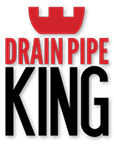Septic Systems
How a septic system works
Properties which do not have access to the Council sewer will generally have a septic tank and the waste water from the house will run out to the tank. Septic tanks have an inlet pipe (where the waste water comes into the tank) which is directly opposite but generally 50mm to 100mm higher than the outlet pipe. There are usually three lids on top of a septic tank, the two smaller lids are above the inlet and outlet designed as inspection openings. There is a larger access lid located in the centre which is generally used to access the tank.
Septic tanks are designed to catch all the solids and allow them to sink to the bottom. The clean (solid free) water is baffled in the tank and then trickles out into absorption trenches or soakage trenches outside the tank. The water then sits in the trenches and absorbs into the ground or it may evaporate, depending on how they’re set up. Sometimes the systems are designed for the grey water to bypass the tank altogether.
Should the septic tank be pumped out when there is a blockage?
If you have a septic tank and there is a drain blockage, it is useful to take the IO (inspection opening) cap off the top of the system to have a look at the situation. If there is waste above the line where the pipe entry is usually visible, your tank will need to be pumped until empty prior to calling a plumber for assistance. Once this has been done, a camera can be put into the pipe and the blockage accurately located. Whilst the camera is waterproof and able to see through standing water, it cannot see through murky sewage!
Blockages associated with septic tanks
A septic tank is a delicate ecosystem which works by relying on certain bacteria to breakdown waste. Generally, the septic tank should do all the hard work on its own; provided non-biodegradable products stay out of it. Never flush the below items down the toilet, they may disturb the pH balance and worst of all cause blockages:
- Female sanitary products
- Nappies
- Dental floss
- Cotton buds
- Food scraps/grease and oil
- Chemicals
- ‘Flushable’ wipes – that’s right, they’re not actually flushable!
- Tissues
Only sewage and waste water should enter your septic tank system via the plumbing. Using excessive amounts of water may also upset the balance as the water level may become too high. The system works by allowing solids to fall to the bottom which bacteria then decompose. Liquid waste sits on top of the tank and the outlet drainage pipe filters out any excess water.
Septic tank maintenance tips
- Be water wise – spread out loads of washing where possible to avoid overloading the tank with water waste
- Use septic tank safe detergents – other detergents can kill the bacteria in the tank which means it will be unable to break down solids properly. This will fill the tank and trenches much quicker and put unnecessary pressure on them
- Never flush anything other than sewage down the pipes
- Wipe out frying pans as best as possible before washing to avoid unnecessary grease entering the pipes and septic tank
- Have the tank pumped on a regular basis – this will vary depending on the size and how many people there are in the household (every 5 years for a small family). This keeps the tank at maximum capacity and prevents solids from overflowing. It also allows the trenches to rest and they dry out
If there is a blockage between the house and septic system the blockage can be cleared with a water jetter. If the blockage is in the soakage trenches they may be able to be cleaned with the water jetter. There is generally a 50% success rate, however your plumber won’t know until they try. If this is unsuccessful, it may mean the trenches physically cannot absorb anymore waste as the dirt is too saturated. In this case, the trenches would need replacing altogether which involves digging them in a new area.
Things to be aware of if your septic system is being installed or upgraded
- Trenches work on capacity – soil tests should be conducted to see how absorbent it is. This will determine how long the trenches need to be
- Council should approve the plans to ensure it is set up correctly and will be able to cope with the intended capacity
- Generally engineers would design these systems, not the plumber themselves unless they have to specific training
- Plumbers are able to install these if they are licensed and have completed the required training
- Trenches can be made out of dome shaped plastic approximately 1.5m long per section or 90 / 100mm PVC slotted pipe. Actual total length will vary.
